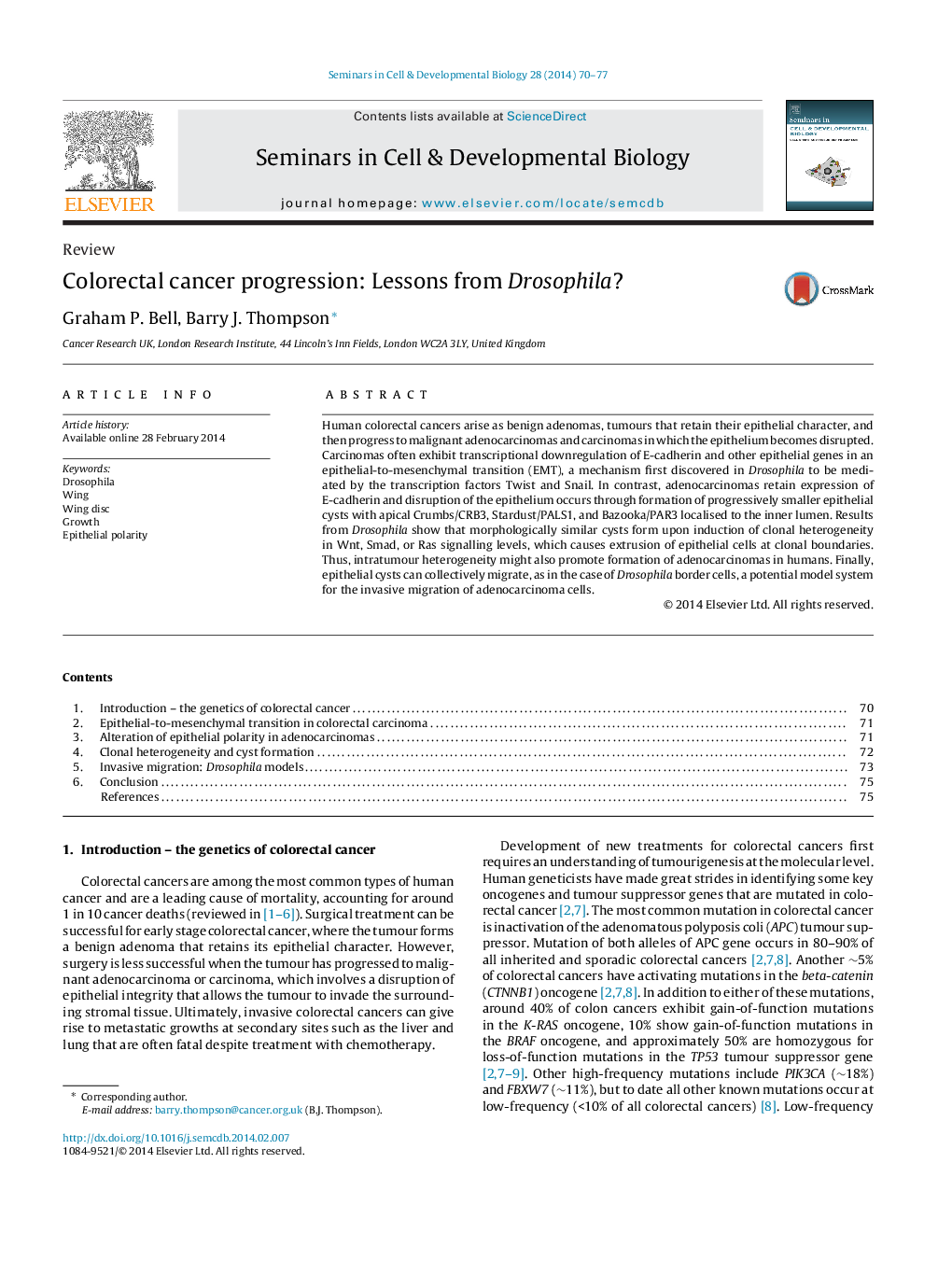| Article ID | Journal | Published Year | Pages | File Type |
|---|---|---|---|---|
| 2202642 | Seminars in Cell & Developmental Biology | 2014 | 8 Pages |
•Signalling pathways that produce colorectal adenomas are summarised.•Adenomas progress to adenocarcinomas by forming tiny epithelial cysts.•Epithelial cysts can become invasive and migratory.•Full-blown carcinomas often undergo an epithelial-to-mesenchymal transition.•The key role of Drosophila as a model system for the above events is described.
Human colorectal cancers arise as benign adenomas, tumours that retain their epithelial character, and then progress to malignant adenocarcinomas and carcinomas in which the epithelium becomes disrupted. Carcinomas often exhibit transcriptional downregulation of E-cadherin and other epithelial genes in an epithelial-to-mesenchymal transition (EMT), a mechanism first discovered in Drosophila to be mediated by the transcription factors Twist and Snail. In contrast, adenocarcinomas retain expression of E-cadherin and disruption of the epithelium occurs through formation of progressively smaller epithelial cysts with apical Crumbs/CRB3, Stardust/PALS1, and Bazooka/PAR3 localised to the inner lumen. Results from Drosophila show that morphologically similar cysts form upon induction of clonal heterogeneity in Wnt, Smad, or Ras signalling levels, which causes extrusion of epithelial cells at clonal boundaries. Thus, intratumour heterogeneity might also promote formation of adenocarcinomas in humans. Finally, epithelial cysts can collectively migrate, as in the case of Drosophila border cells, a potential model system for the invasive migration of adenocarcinoma cells.
